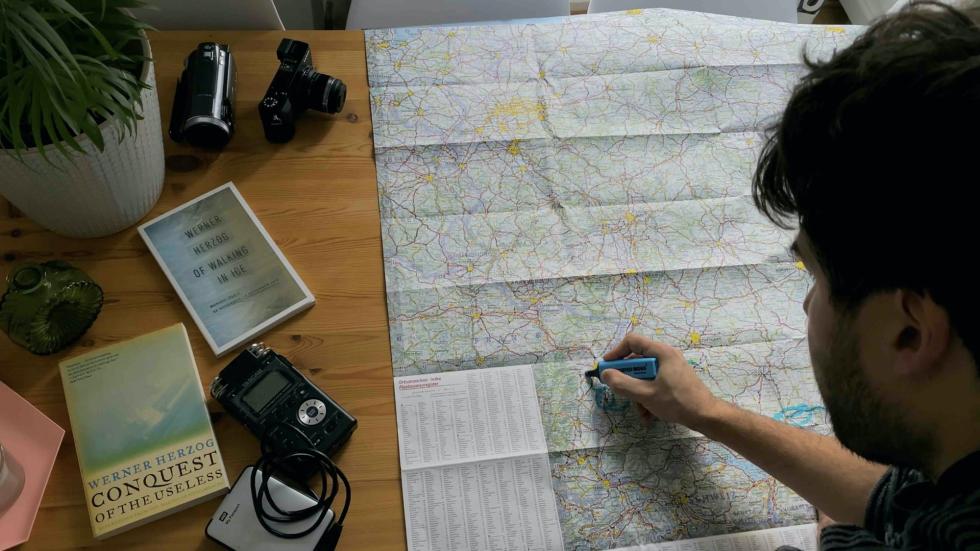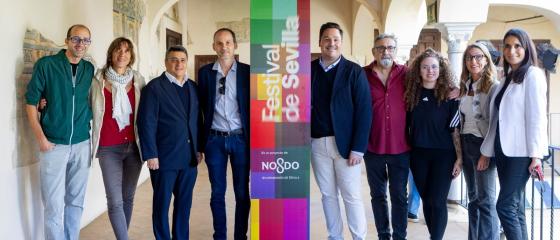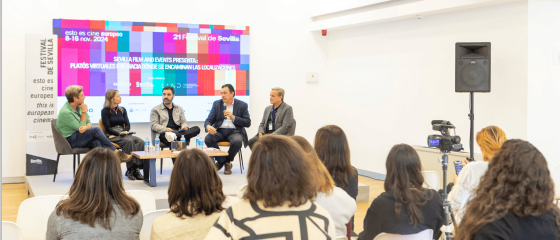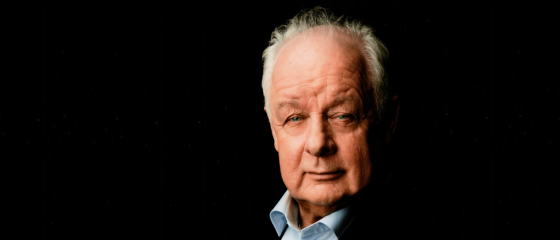A true reference in European cinema, Werner Herzog is paid a film tribute by another restless director, Madrid native Pablo Maqueda, who speaks about his film and invites us to explore the filmography of the German filmmaker.
"I will walk for you and my love for cinema". Pablo Maqueda dedicates this adventure to his partner (and producer of the film, Haizea G. Viana) as well as to his own cinema, where his voice mixes with the sounds of the forest and with the music of José Venditti in an adventure that pays homage to a filmmaker who has been a key figure in the history of cinema and to the director of Dear Werner (Walking on Cinema): "Herzog is inimitable. There is no one like him. You only have to look at his fiction films, and particularly his non-fiction pieces, where, with a notable lack of resources, he manages to create very powerful imagery. He is someone I turn to whenever I want to be motivated or inspired for one of my projects. Ceaseless, adventurous, risky, a hiker, a fighter... qualities that I will intend to carry in my backpack as a filmmaker for the rest of my life".
Herzog's talent for merging film with life seems to have enlightened the new project by Maqueda who follows in the footsteps of the German master in finding his own identity as a filmmaker. "I have always been very modest when talking about myself in my films, but a documentary shot in the first person like this one, simply couldn't be made in any other way. I wanted for the viewer to have a sensory experience. I wanted them to accompany me up to the point of merging with me in my own gaze". With comfortable boots and a light backpack, Maqueda replicates the journey on foot from Munich to Paris that Herzog took in 1974 to visit his friend Lotte Eisner (writer and co-founder of the Cinematèque Française), who was seriously ill at the time. An intimate journey that he collected in the book Of Walking on Ice. As Maqueda explains: "The book started out as a simple travel itinerary which led me deeper and deeper into Herzog's filmography as I analyzed its pages. Then I realized that there was a film, in a sense, that would talk about me through him and his cinema".
As he walks, step by step, Pablo Maqueda also reflects on the difficulties, the sticks in the wheels, that the director encounters when he wants to make films, which is another adventure as exciting as walking 775 kilometers in 22 days: "Making films is an exciting process, but a very hard one. Demystifying the idea of the successful filmmaker was a trigger. Reflecting on the filmmaker's path, not seen as from the top of the mountain but from the road to it. By making the film, I aimed to encourage and motivate my fellow filmmakers not to despair and to keep walking".
Endurance, struggle, motivation, love of cinema... those are some of the elements present in Dear Werner, a film that the Seville European Film Festival will screen in the New Waves Non-Fiction section, and which has the collaboration of Herzog himself, who rewrote some excerpts from the script based on episodes from his own life and offered to read some passages from his book to illustrate the images filmed by Maqueda: "It was an unexpected gift, he liked the film. I still get excited when I read his impressions and comments. Especially when he told me that he hoped that through the film I would have gained confidence as he gained it by paying tribute to Murnau with his Nosferatu".
Travelling through Herzog's cinema
We asked Pablo Maqueda, after reproducing the journey made by Werner Herzog, to guide us through the German filmmaker's filmography. A cinematographic journey divided into five stages:
From The Great Ecstasy of the Woodcarver Steiner (1974) to Werner Herzog Eats His Shoe (1980)
"It is impossible to describe his short films. The bloody face of a ski jumper ready to jump off again. The definitive metaphor of his restless spirit as a filmmaker. Someone so crazy to even eat his own shoe (stew)".
From Aguirre, the Wrath of God (1972) to Fitzcarraldo (1982).
The jungle. The fog. The screams. The armors. A ship. A mountain. The madness. The Herzogian spirit represented by his alter ego, friend and enemy: Klaus Kinski.

From La soufriere (1977) to Into the inferno (2016).
The reddest and most flaming lava that the eyes will be able to witness. Fire as a representation of the human soul. From the young Herzog who records the last survivor in a desert village on the island of Guadalupe to the old Herzog still willing to climb up to the most dangerous peak in Indonesia.
From Cave of Forgotten Dreams (2010) to Encounters at the End of the World (2007).
A penguin heads towards the horizon. Perhaps towards his own death. Herzog knows this but doesn't care, because he has been that animal too, walking into the oldest known rock art cave in the world. The most difficult yet? He decided to record it in 3D and illuminate it with flashlights.
From Grizzly Man (2005) to Into the Abyss (2011)
From the most overwhelming off-camera experience in the history of cinema (our imagination is more frightening than any image) to the face of an imprisoned father desperately trying to show his soul to the camera. Here is the Herzog interviewer who can freeze our blood with just one of his questions. The most critical Herzog. The multiple facets of the genius reflecting on his narratives. All of this accompanied by his incomparable voice of Bavarian accent. The voice of God.







